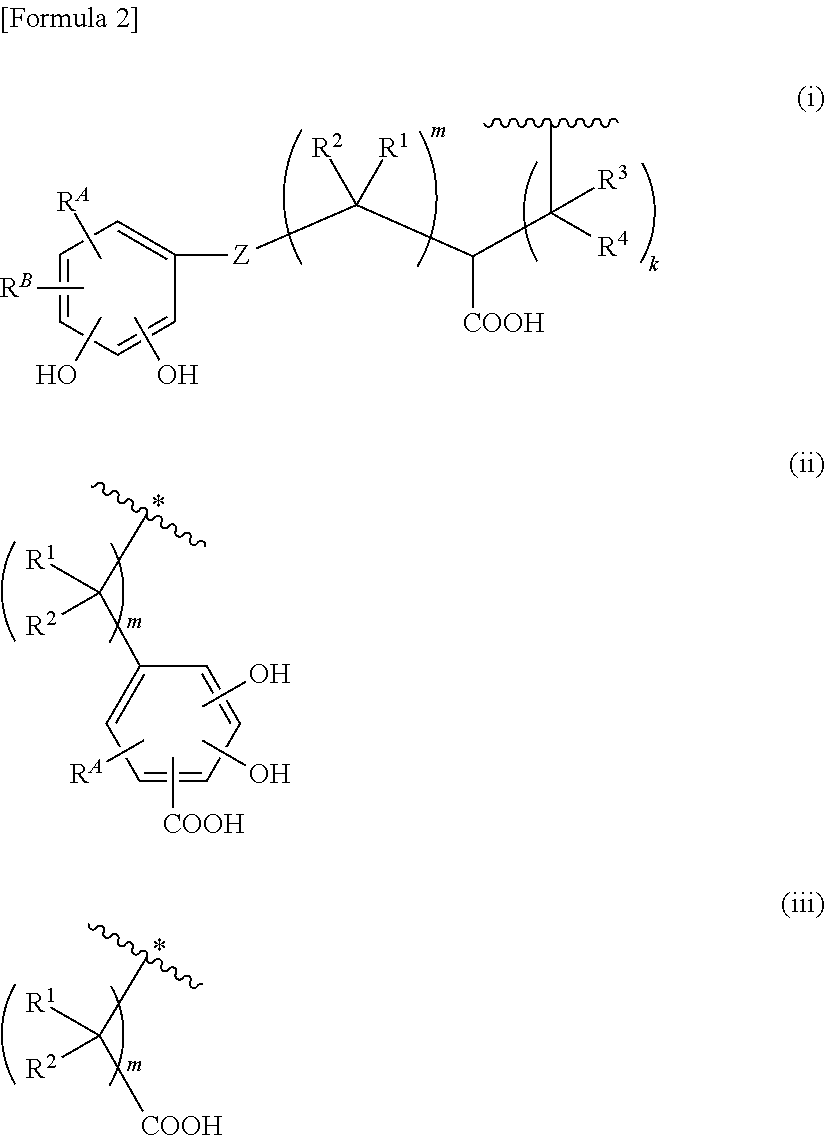Cephem derivative having catechol group
a technology of catechol group and derivative, applied in the field of cephem compounds, can solve problems such as clinical problems and the inability to disclose the compounds of subjects
- Summary
- Abstract
- Description
- Claims
- Application Information
AI Technical Summary
Benefits of technology
Problems solved by technology
Method used
Image
Examples
example 1
Synthesis of Compound I-1
[0187]
Step 1: Compound 1a→Compound 1b
[0188]After a tetrahydrofuran (20 ml) solution of diphenyldiazomethane (10.72 g, 55.2 mmol) was added to a tetrahydrofuran (150 ml) solution of compound 1a (15.98 g, 46.0 mmol) synthesized referring to J. Org. Chem. 2008, 73, 517-521, the mixture was stirred at room temperature overnight. The reaction solution was concentrated under reduced pressure, subjected to silica gel column chromatography, and eluted with hexane / ethyl acetate, and fractions containing the desired compound were concentrated under reduced pressure to obtain compound 1b (20.97 g, 89%).
[0189]1H-NMR (CDCl3) δ: 7.45-7.09 (25H, m), 6.46 (1H, s), 3.67-3.59 (2H, m), 3.41-3.34 (1H, m), 3.12 (1H, br s), 2.26-2.17 (1H, m).
Step 2: Compound 1b→Compound 1c
[0190]To a tetrahydrofuran (210 ml) solution of compound 1b (20.97 g, 40.8 mmol) and N-hydroxyphthalimide (7.33 g, 44.9 mmol) were added dimethylazodicarboxylic acid (6.63 ml, 44.9 mmol) and triphenylphosphine (...
example 2
Synthesis of Compound I-2
[0205]
Step: Compound 1l+Compound 2b→Compound I-2
[0206]Using compound 1l (1.36 g, 1.00 mmol) and compound 2b (236 mg, 1.10 mmol), the desired compound was synthesized as described in step 8 of Example 1.
[0207]Yield 226.1 mg, (26%)
[0208]1H-NMR (D2O) δ: 7.08 (1H, d, J=8.54 Hz), 7.00 (1H, s), 6.89 (1H, d, J=8.54 Hz), 5.82 (1H, d, J=4.80 Hz), 5.19 (1H, d, J=4.80 Hz), 4.68-4.66 (2H, m), 3.84 (1H, d, J=13.88 Hz), 3.64-3.39 (10H, m), 3.08 (1H, d, J=16.93 Hz), 2.23 (4H, br s).
[0209]Elemental analysis: C29H33ClN8O10S2(H2O)6.1
[0210]Cal'd: C, 40.36; H, 5.28; Cl, 4.11; N, 12.98; S, 7.43(%).
[0211]Found: C, 40.54; H, 5.15; Cl, 4.40; N, 12.98; S, 7.49(%).
example 3
Synthesis of Compound I-3
[0212]
Step: Compound 1l+Compound 3b→Compound I-3
[0213]Using compound 1l (1.36 g, 1.00 mmol) and compound 3b (126 μl, 1.10 mmol), the desired compound was synthesized as described in step 8 of Example 1.
[0214]Yield: 471.5 mg, (42%)
[0215]1H-NMR (D2O) δ: 8.41 (1H, d, J=5.95 Hz), 8.18 (1H, d, J=7.63 Hz), 7.65 (1H, t, J=6.94 Hz), 7.01 (1H, d, J=8.24 Hz), 6.95 (1H, s), 6.77 (1H, d, J=8.24 Hz), 5.80 (1H, d, J=4.80 Hz), 5.41 (1H, d, J=15.17 Hz), 5.14 (1H, d, J=15.17 Hz), 5.08 (1H, d, J=4.80 Hz), 4.70-4.65 (1H, m), 4.61-4.55 (2H, m), 3.32-3.08 (5H, m), 2.78 (1H, d, J=17.69 Hz), 2.32-2.20 (2H, m).
[0216]Elemental analysis: C31H27ClN7O10S2Na(H2O)7.3
[0217]Cal'd: C, 40.84; H, 4.60; Cl, 3.89; N, 10.75; S, 7.03; Na, 2.52(%).
[0218]Found: C, 40.97; H, 4.53; Cl, 3.40; N, 10.77; S, 6.73; Na, 2.49(%).
PUM
| Property | Measurement | Unit |
|---|---|---|
| reaction temperature | aaaaa | aaaaa |
| reaction temperature | aaaaa | aaaaa |
| reaction temperature | aaaaa | aaaaa |
Abstract
Description
Claims
Application Information
 Login to View More
Login to View More - R&D
- Intellectual Property
- Life Sciences
- Materials
- Tech Scout
- Unparalleled Data Quality
- Higher Quality Content
- 60% Fewer Hallucinations
Browse by: Latest US Patents, China's latest patents, Technical Efficacy Thesaurus, Application Domain, Technology Topic, Popular Technical Reports.
© 2025 PatSnap. All rights reserved.Legal|Privacy policy|Modern Slavery Act Transparency Statement|Sitemap|About US| Contact US: help@patsnap.com



